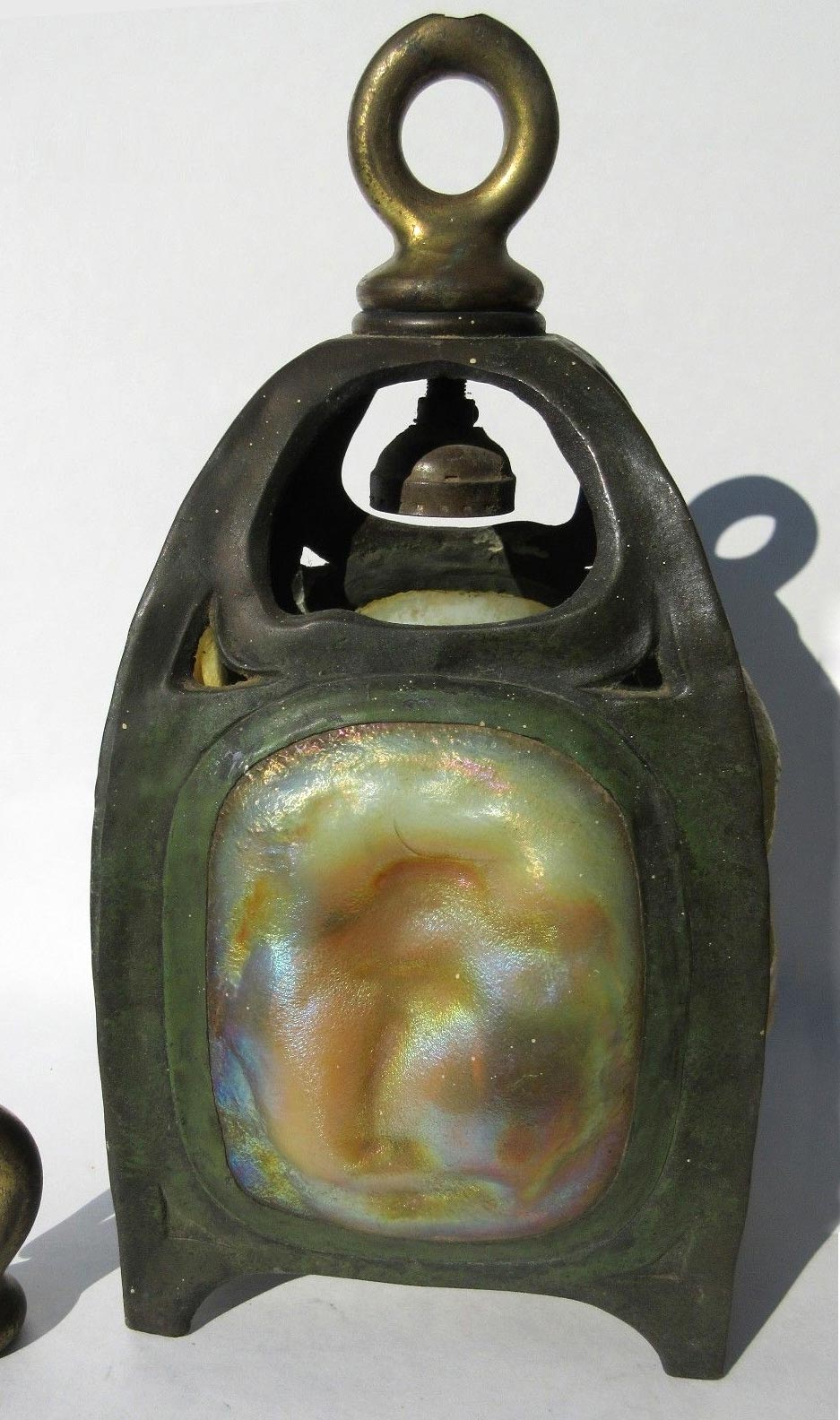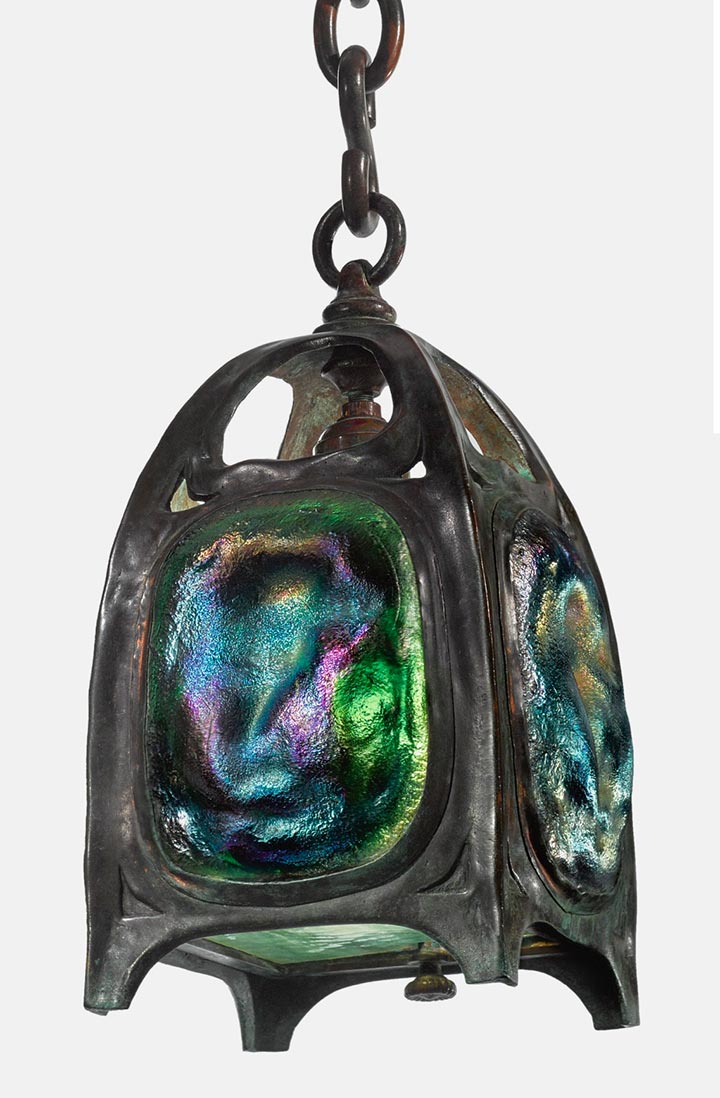For the foreseeable future, I will publish once a week on Monday.
There isn’t much going on in the summer, so I’ve decided to reprint one of my most popular blogs, How can you tell if an etching is authentic?, published originally on 7/29/2009.
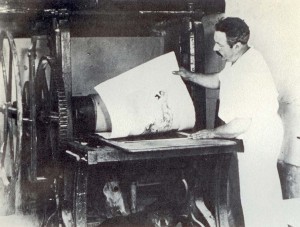
Louis Icart pulling a proof of Joy of Life from the etching press
First one has to understand the process of producing an etching. The artist does his work on a copper plate, so the “original” is a copper plate that’s rarely for sale. To produce the image, the plate first is hand-inked. Then the paper is laid down on top and the two pass together through the etching press, under tremendous pressure. The pressure transfers the image to the paper. Since the copper plate has thickness, it “dents” the paper around the edge of the image. This “dent” is called a plate impression. You can see it and feel it around the edge of the plate. So #1. A real etching has a plate impression.
Since the process is not photographic and there is no printing press, there are no dots in the image. If you use a magnifying glass to look at a photograph in a newspaper, you can see the entire image is made up of dots. Use a magnifying glass with an original etching and there are no dots. So #2. An authentic etching does not have any dots in the image.
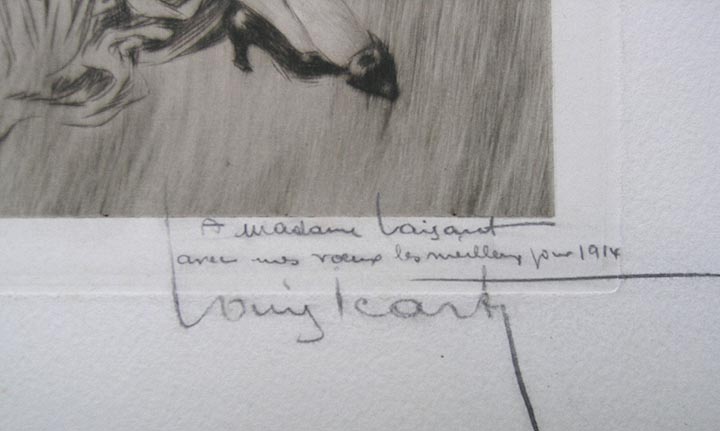
An authentic pencil signature of Louis Icart
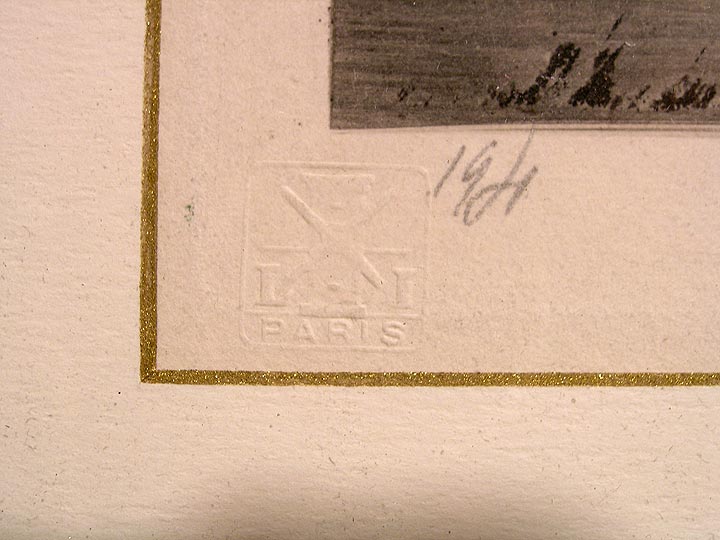
The blindstamp of the Louis Icart Society
Because of this post I have received many requests over the years for authentication of etchings by artists other than Louis Icart. I am only an expert in the works of Louis Icart, not other artists. So please, if you have questions about your etching, don’t send them to me. I really can’t help unless the artist is Louis Icart. And remember, there is a fee of $125 for authentications and/or appraisals.
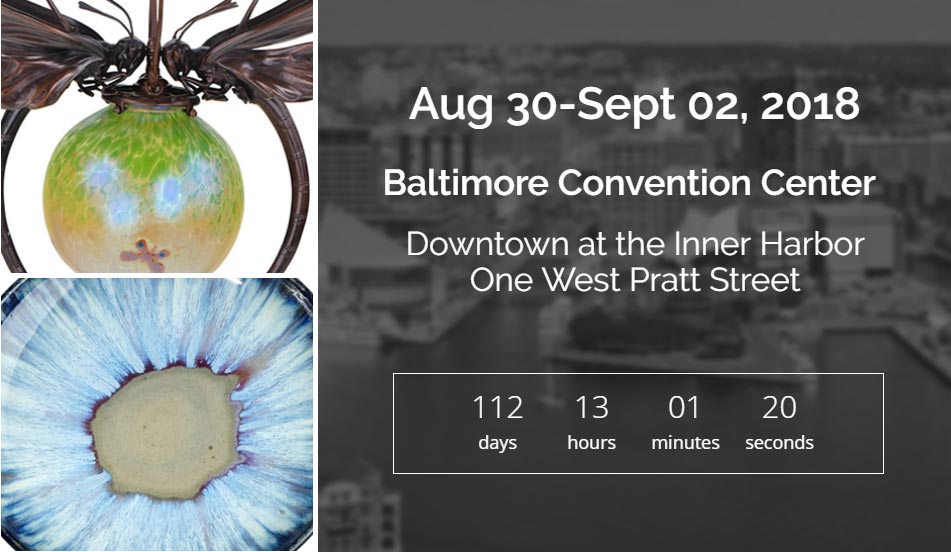 The Baltimore Art, Antique & Jewelry Show is now only four weeks away, at the end of the summer, August 30 – September 2, 2018. We were forced to give up shows like Denver. Unfortunately the Baltimore show promoter has moved the show one week later than usual, to the Labor Day weekend. The show used to be held over the Labor Day weekend, but that was many years ago. The show is wonderful, so we’ll continue to exhibit there regardless of the change of dates.
The Baltimore Art, Antique & Jewelry Show is now only four weeks away, at the end of the summer, August 30 – September 2, 2018. We were forced to give up shows like Denver. Unfortunately the Baltimore show promoter has moved the show one week later than usual, to the Labor Day weekend. The show used to be held over the Labor Day weekend, but that was many years ago. The show is wonderful, so we’ll continue to exhibit there regardless of the change of dates.
We’re still very much in business between shows, so please don’t hesitate to email or call. I recently listed some of the new items on my website and will list more every week. Click Philip Chasen Antiques to take a look. I will make every effort to actively list new items as often as time permits. I always strive to offer the finest objects for sale on my website and at every show. There are many items for sale, sold items with prices and free lessons about glass and lamps. And remember to keep reading my blog.

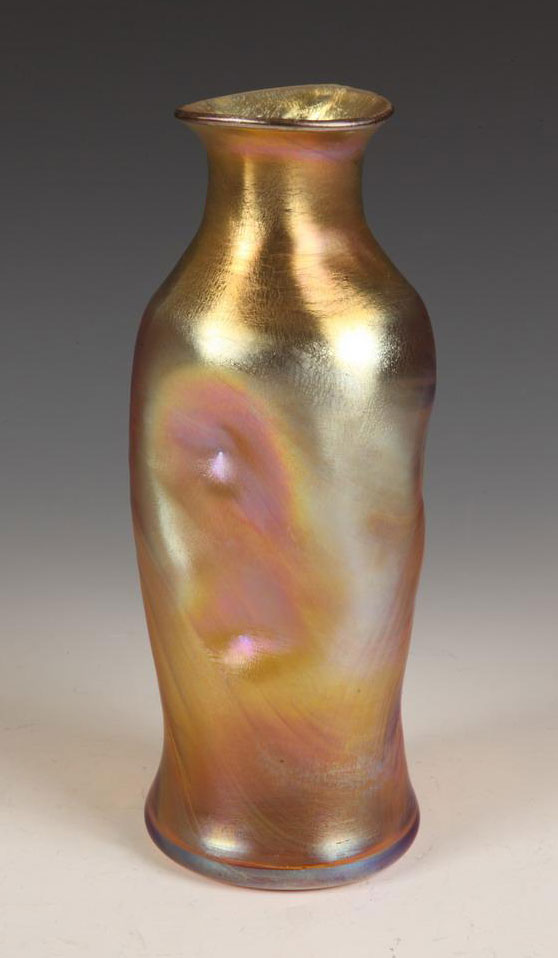
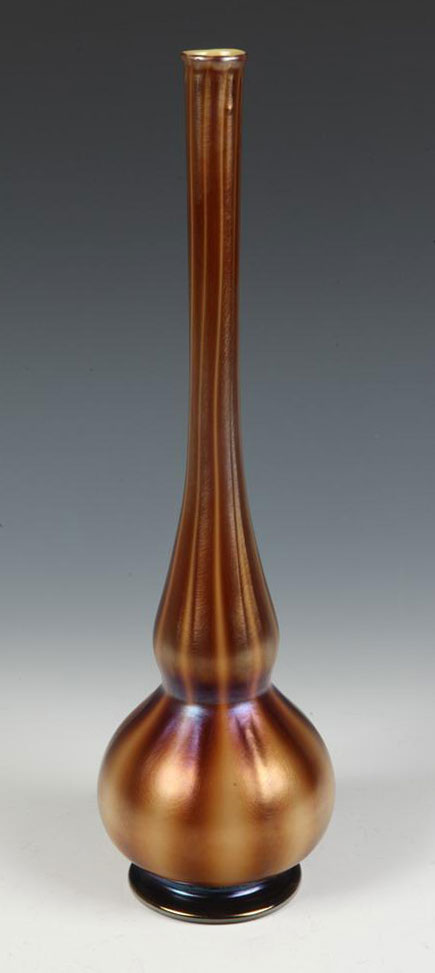
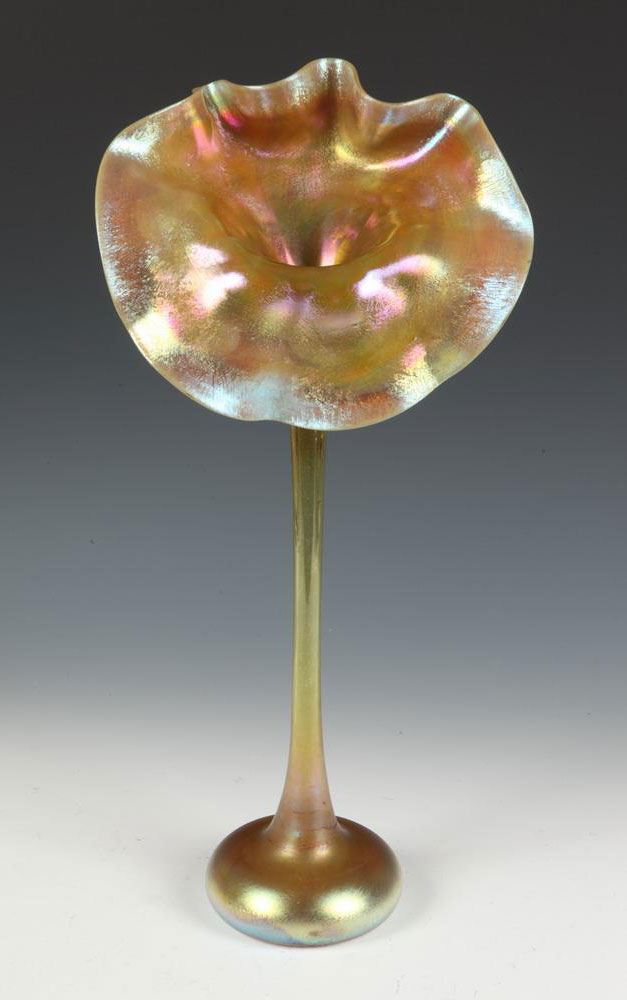
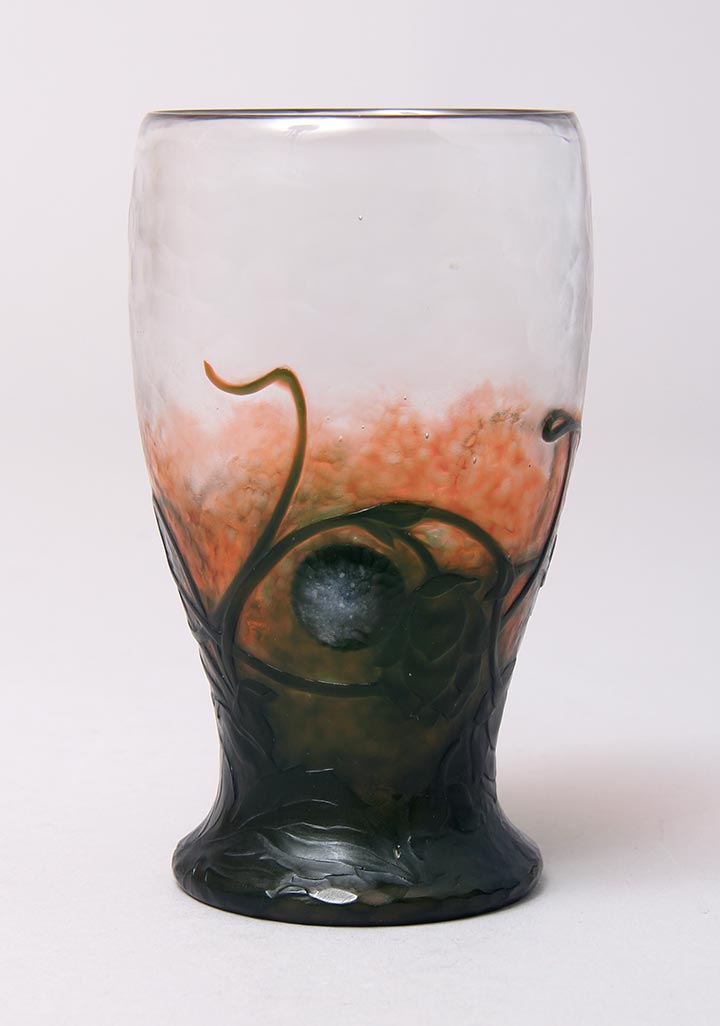
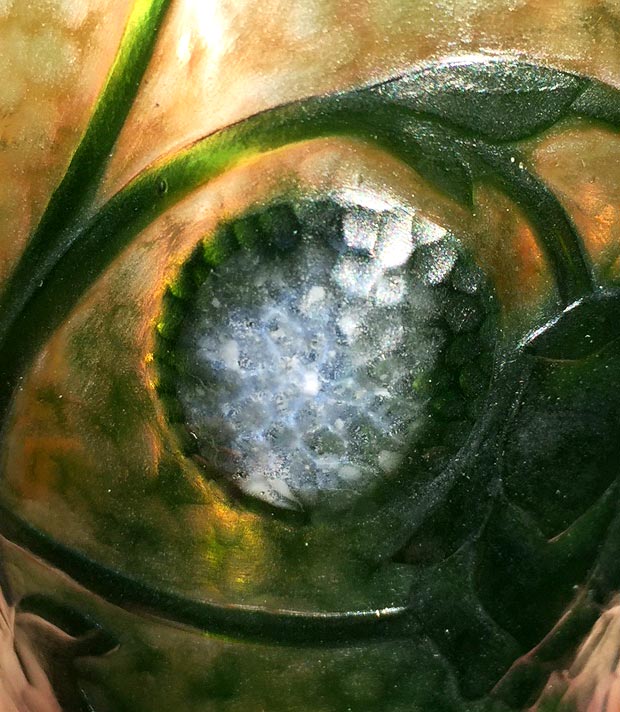 First we have to look at the single flower, whose center was molten applied with blue internal coloration during the making of the vase. After cooling, an artist hand-engraved (wheel-carved) a bumpy texture (martelé) onto the flower center and details into all of the leaves. To complete the vase, the artist carved a martelé texture into the background and the foot rim.
First we have to look at the single flower, whose center was molten applied with blue internal coloration during the making of the vase. After cooling, an artist hand-engraved (wheel-carved) a bumpy texture (martelé) onto the flower center and details into all of the leaves. To complete the vase, the artist carved a martelé texture into the background and the foot rim.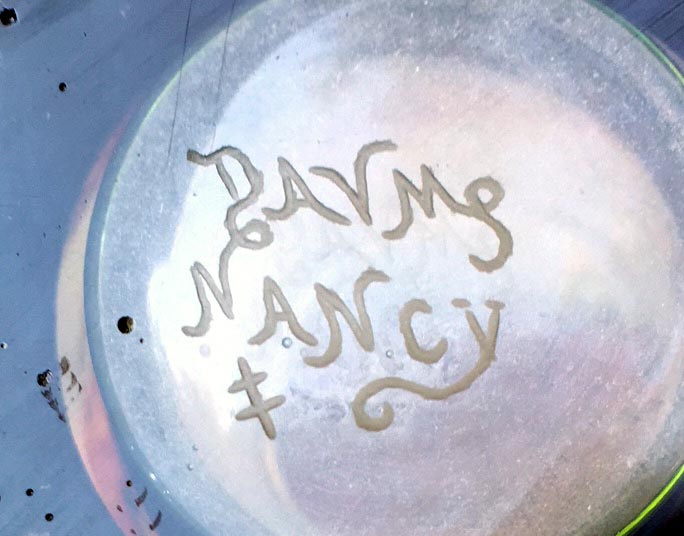 Daum vases with wheel-carving often had hand-engraved signatures, as was the case with this vase. It’s fancy, textbook-perfect, and found on the underside.
Daum vases with wheel-carving often had hand-engraved signatures, as was the case with this vase. It’s fancy, textbook-perfect, and found on the underside. 